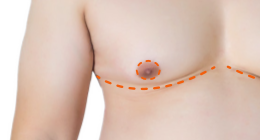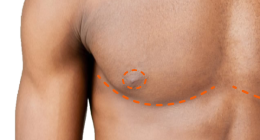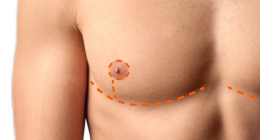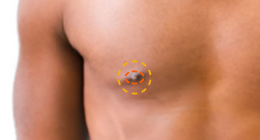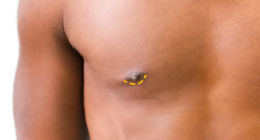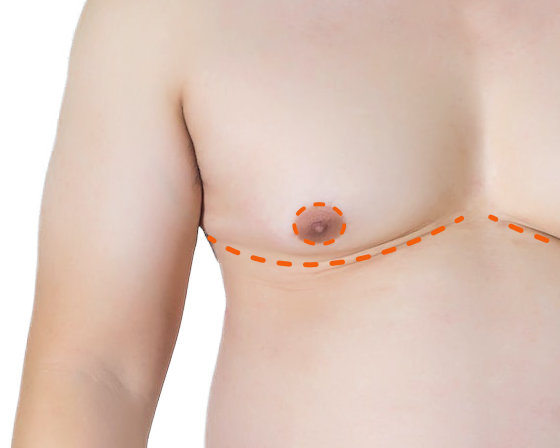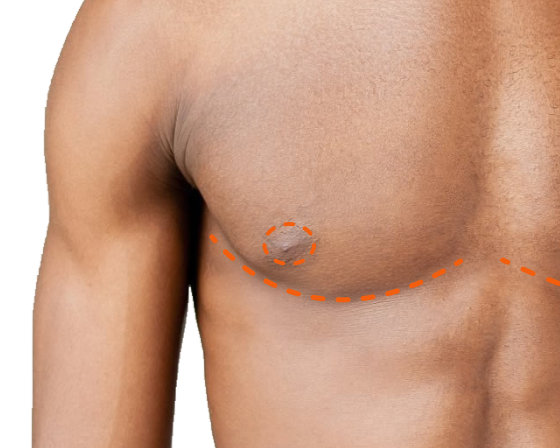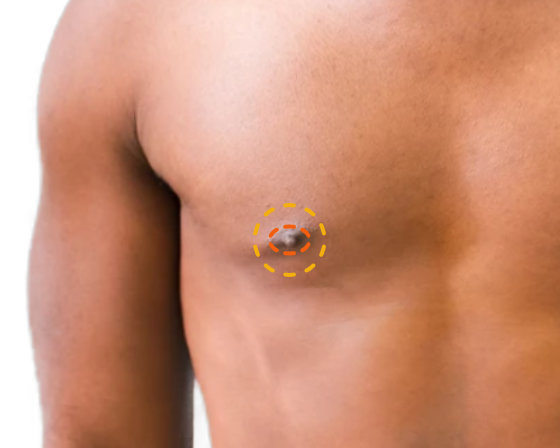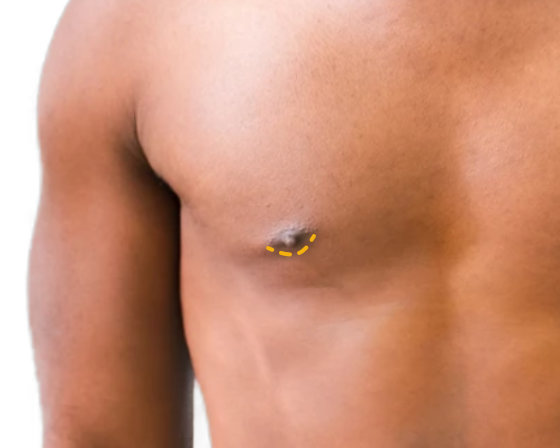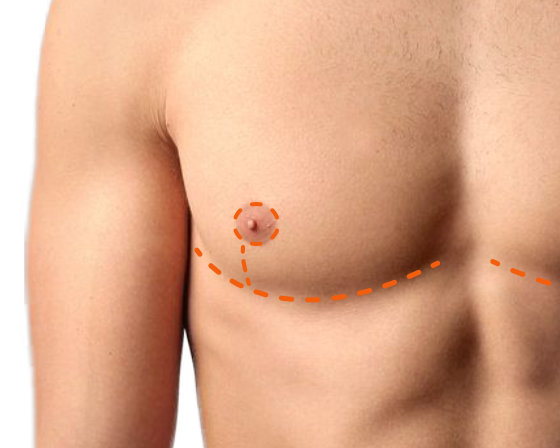FTM Top Surgery Procedures
What Is Top Surgery?
In medical terms, gender-affirming Top
Surgery is a bilateral subcutaneous
mastectomy. The goal goes beyond just creating
a flat chest; Top Surgery aims to achieve an
aesthetically pleasing masculine contour,
preserve sensation, and minimize scarring.
Gender-affirming Top Surgery includes:
- Removal of most of the breast tissue.
- Removal of excess skin.
- Removal of the inframammary fold.
- Reduction and repositioning of the nipple-areolar complex.
Double Incision Top Surgery
The Double Incision Top Surgery procedure is one of the most popular techniques, especially for those with medium to larger chests.
Buttonhole Technique Top Surgery
Popularized by Dr. Hope Sherie, Buttonhole Technique Top Surgery is a good approach for optimizing nipple-areola size, position, sensation and pigmentation.
Peri-areolar
Top Surgery
The Peri-Areolar Top Surgery procedure is a great option for those with smaller chests or B-sized chests with good skin elasticity. Sensation is often preserved.
Keyhole Top Surgery
Keyhole Top Surgery is a great option for those with smaller chests. This minimally invasive procedure results in low scarring and a masculine chest contour.
Inverted-T Top Surgery
Inverted-T Top Surgery is a good choice for medium to large chested individuals who would like to retain as much sensation as possible in the nipple/areola.
How To Choose a Top Surgery Procedure
The choice of Top Surgery procedure is largely based on chest size and skin elasticity:
| Chest Characteristics | Recommended Techniques |
|---|---|
| Small breasts with good skin elasticity | Periareolar or Keyhole |
| Moderately sized chests (B cup) with good skin elasticity | Periareolar, Buttonhole Technique, Double Incision, or Inverted-T |
| Large chest or moderately sized chest with poor elasticity | Buttonhole Technique, Double Incision, or Inverted-T |
| Very large chests | Buttonhole Technique or Double Incision |
Skin with low elasticity—often resulting from years of chest binding—can limit the choice of procedure.
Revisions surgeries are common and may include:
- Removal of "dog ears" (excess skin or tissue at incision ends)
- Reduction or repositioning of the areola
- Nipple reduction
- Additional liposuction for contour irregularies
More about Top Surgery revisions »
Some individuals opt for breast reduction mammoplasty instead of subcutaneous mastectomy, sometimes due to insurance limitations. However, prior breast reduction surgery can limit your options if you choose to have Top Surgery later on. If Top Surgery is part of your future plans, this should be carefully considered.
Top Surgery techniques can vary between surgeons. To achieve the best outcome, take the time to discuss specific details with your surgeon, including the size, placement, and design of the areolas and nipples, and scar shapes.
Your surgeon will provide detailed instructions for post-operative care. Following these recommendations is essential to ensure proper healing.
For more information about post-surgery scar care, see the guide on Top Surgery scar management.
Last updated: 01/23/25
